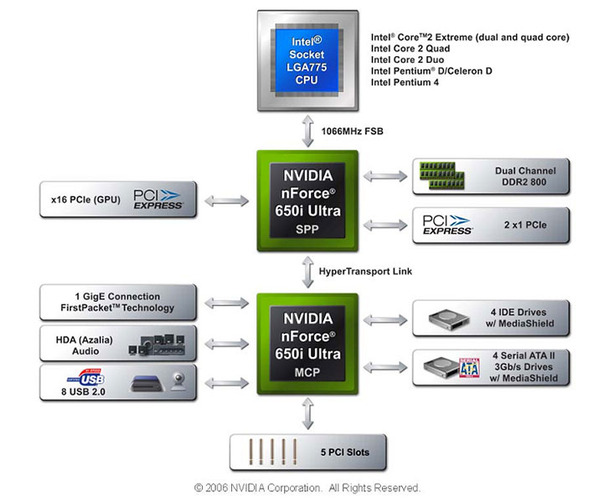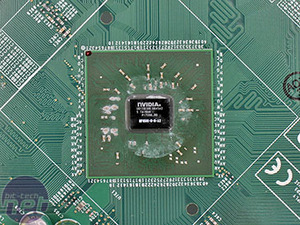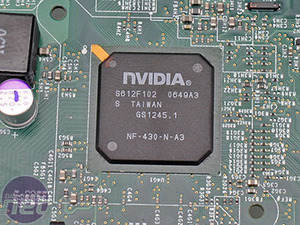Introduction
The nForce 6-series chipset for Intel's Core 2 range is massively popular, there's no doubt about that. With a concentration on SLI, Nvidia seems to have the market wrapped up with its multi-GPU and chipset technologies. However, not everyone can afford a couple of 8800 Ultras and an Asus Striker Extreme or Abit IN9-32X MAX, and there are still many people who prefer just to indulge in a modest set up of single graphics card and inexpensive motherboard.In times past, there has been a trend that some boards can be too cheap, where it won't even be worth the PCB it's printed on. Those days are mostly gone, thankfully. EVGA, a primary Nvidia partner, has a new board out based on Nvidia's new nForce 650i Ultra chipset.
As the name suggests, there's no SLI here; the Ultra is a single PCI-Express x16 slot (version 1.0) supporting motherboard. It may also sacrifice a number of other features too, but still keeps the same core enthusiasm of the 6-series underneath.
Nvidia nForce 650i Ultra
The nForce 650i Ultra SPP contains all the PCI-Express slots, with a single x16 and two x1s. Usually these x1s are used for Ethernet, an IDE port if it's not included or eSATA/extra SATA ports. However Nvidia integrates a physical layer (PHY) Gigabit Ethernet MAC and support for four SATA ports and two IDE ports into the southbridge. The combination works well to free up the resources for use with other things and it allows manufacturers to make a cheaper board, because all the essentials are included.
While two IDE channels are incorporated on the southbridge (supporting four drives), only a single channel is included on the board. SATA hard drives have been around for long enough now so that everyone can upgrade to even the cheapest hard drive on a SATA interface. It's only optical drives holding back the disappearance of the IDE port altogether, but that will soon change with the introduction of more in the forthcoming year.
That doesn't mean to say people who are investing in a mainstream board like this will also have the incentive to splash out on a new DVD-RW drive though. They may be just £20 now, but the next upgrade most people will consider is only when their current drive dies or when they get new functionality from Blu-Ray or HD-DVD. It's not the same case with hard drives, where a £40 SATA drive is several generations faster than anything IDE only.
Still included are five PCI slots, although it's unlikely you'll ever see that many on a board now. Because this same southbridge has been used back since the days of nForce 4, only eight USB 2.0 ports are included. That's still a fair amount, and you can always use a hub for extra ports, but today's latest boards now support twelve USB 2.0 devices natively.
In all, it looks like a solid chipset choice for the mainstream market. It's virtually identical to the nForce 650i SLI, where that has its single x16 lane split into two x8s by means of a flip card (usually), but for the value concious sector the nForce 650i Ultra still has all the essentials natively incorporated so you know what you're getting.

MSI MPG Velox 100R Chassis Review
October 14 2021 | 15:04












Want to comment? Please log in.